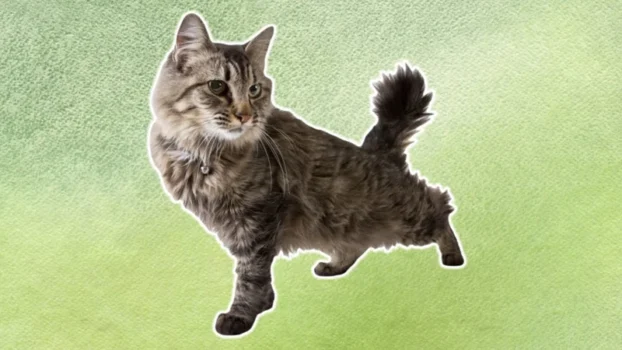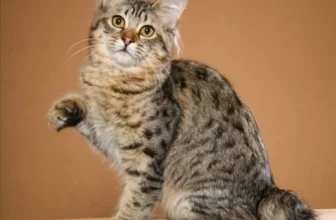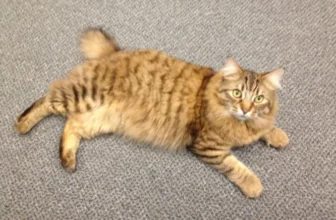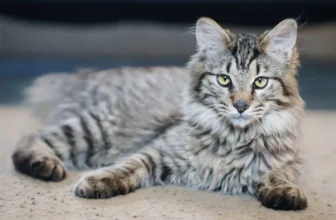It’s amazing to look at the various breeds of cats out there and see how each one has evolved over time. One breed that truly stands out is the American Bobtail. This captivating feline is known for its distinctive bobbed tail and wild appearance, but there’s so much more to the American Bobtail than meets the eye. In this article, we’ll take a look at the evolutionary history of the American Bobtail breed. From its North American wildcat ancestry to its recognition as a breed, to its physical and personality traits, and its role in popular culture, we’ll cover it all. So, grab a cup of coffee and get ready to be amazed by the fascinating journey of the American Bobtail.
The Origins of the American Bobtail
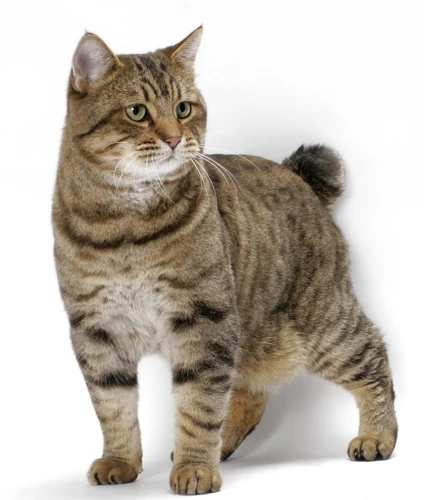
Research into the origins of one of America’s most beloved feline breeds, the American Bobtail, has revealed a rich history with a mix of wildcat ancestry and cultural influences. While the exact details of the breed’s emergence are unclear, several fascinating theories have emerged. Some prominent theories suggest that the American Bobtail has direct links to the North American wildcat, while others point to the influence of Japanese Bobtails and Siamese cats. To understand the American Bobtail’s fascinating history, let’s explore some of the most compelling theories about the breed’s origins. For more information on the American Bobtail’s ancestors, check out our article on the topic.
North American Wildcat Ancestry
The American Bobtail breed traces its ancestry to the North American wildcat. These cats have been indigenous to North America for centuries and are known for their distinctive shortened tails. One theory suggests that the American Bobtail could have been bred from the native American cat breeds due to their similar appearance. Another theory suggests that the breed was created from a chance genetic mutation in a domestic cat from the United States. It is also believed that the domestic cat crossed with the lynx or bobcat, resulting in the recognizable shortened tail that is present in the breed today.
There is anecdotal evidence that suggests the American Bobtail has been present in North America for centuries. The breed’s wildcat ancestry and long history on the continent are also reflected in various Native American myths and legends. According to one legend, a Native American tribe once encountered a wildcat with a short tail that had a unique character, much like their own tribe. They believed this wildcat was a special creature that they were meant to care for, and the cat eventually became known as the “bobtailed cat” and became part of their tribe.
While the bobtail’s true origins remain a bit of a mystery, it’s clear that they played an important role in Native American culture. The breed’s wildcat ancestry and long history on the continent have helped it become a beloved and enduring part of American cat breeds. It was also a significant influence on other American cat breeds, such as the Japanese Bobtail and the American Curl.
In the next section of the article, we’ll explore the role that Japanese Bobtails and Siamese cats played in the creation of the American Bobtail breed.
Japanese Bobtails and Siamese Cats
The origins of the American Bobtail breed are unique and fascinating. The breed is thought to have taken inspiration from other cat breeds such as the Japanese Bobtail and Siamese Cats.
Japanese Bobtails are a cat breed that have a long history in Japanese culture. This ancient breed’s history goes back centuries, and they are believed to have been strongly associated with Japanese imperial families, as well as royalty and the aristocracy. Japanese Bobtails are known for their short, bobbed tails which are the result of a natural genetic mutation. Interestingly, these cats have been mentioned in ancient Japanese literature as far back as the 10th century.
Siamese Cats are another breed that has played an important role in the development of the American Bobtail. It is said that these cats were brought to the United States from Thailand (formerly Siam) in the late 1800s. Siamese Cats were initially known for their unusual and striking appearance, as well as their cleverness and loyalty. These cats had a huge impact on American cat breeding, and their genes would eventually make their way into several prominent cat breeds, including the American Bobtail.
It is believed that the initial breeding of the American Bobtail involved Japanese Bobtails and Siamese Cats, leading to the characteristic short, bobbed tail as well as other unique features. The American Bobtail breed would go through several more stages of development before being recognized as a distinct breed in the 1980s.
Interestingly, the American Bobtail has also been mentioned in various cultural contexts throughout history. According to Native American legends, the bobbed tail of the American Bobtail is the result of a crossbreeding between a domestic cat and a wild lynx. Additionally, there are famous historical figures who have owned American Bobtails, including President Calvin Coolidge. The breed has also been recognized at various feline exhibitions throughout history, sparking interest among cat fanciers and enthusiasts alike.
The Development of the American Bobtail Breed
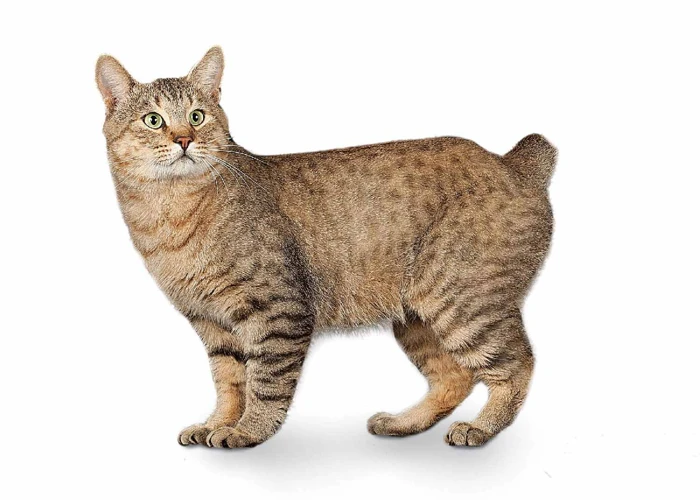
As the American Bobtail continued to gain popularity with cat enthusiasts, breeders worked to develop their unique features while also maintaining their wild and rugged appearance. Through careful breeding and selection processes, the American Bobtail became a distinct breed with its own set of standards and characteristics. Let’s take a closer look at the development of this fascinating breed.
The Early Years
During the early years of the American Bobtail breed, there was little to no organization or standardization of the breed. A small number of breeders were working independently to develop the breed, but there was no official registry or governing body to oversee their efforts.
Development by Independent Breeders:
The development of the American Bobtail breed during its early years was carried out by independent breeders operating in various parts of the United States. Each breeder had their own vision for the ideal American Bobtail, and so there was a wide variety of cats being produced.
Genetic Diversity:
One of the key factors that contributed to the diversity of the early American Bobtail population was the fact that the breed was developed from cats with a range of different genetic backgrounds. These cats were often feral or semi-feral, and were bred with domestic cats to create the American Bobtail.
Original Personality Traits:
During the early years of the American Bobtail breed, breeders focused heavily on developing cats with a friendly and sociable temperament. The breed was intended to be suitable for families with children, and so a lot of effort was put into breeding cats that would be patient, loving, and playful.
To further the cause of the breed and ensure its longevity, a group of breeders came together to establish a registry for American Bobtails. By working collaboratively, they were able to establish breed standards and create a level of consistency in the American Bobtail population.
Establishment of a Registry:
The American Bobtail breed was officially recognized and registered in the late 1980s. At this time, strict breed standards were established, and breeders were required to adhere to these standards to ensure that the cats they produced were consistent with the breed’s overall appearance and temperament.
Today, the American Bobtail breed is recognized by various cat registries, including The International Cat Association (TICA) and the Cat Fanciers’ Association (CFA). Thanks to the hard work of those early breeders, the American Bobtail breed has become a popular and beloved pet, known for its friendly personality and distinctive appearance.
Recognition as a Breed
After years of development and breeding, the American Bobtail was finally recognized as an official breed in the 1980s. In 1985, the International Cat Association (TICA) granted the breed championship status.
The American Bobtail is now recognized by all major cat registries, including:
| Registry | Date of Recognition |
|---|---|
| The Cat Fanciers’ Association (CFA) | 2000 |
| The Governing Council of the Cat Fancy (GCCF) | 2009 |
| The American Cat Fanciers Association (ACFA) | 2002 |
This recognition as an official breed helped to increase the popularity of the American Bobtail, as more and more people became interested in owning these unique and beautiful cats. However, it is important to remember that breed recognition also comes with responsibilities. Breeders must adhere to strict guidelines to maintain the health and welfare of the cats, and potential owners should do their research and choose a reputable breeder to ensure a healthy and happy pet.
Distinctive Features of the American Bobtail
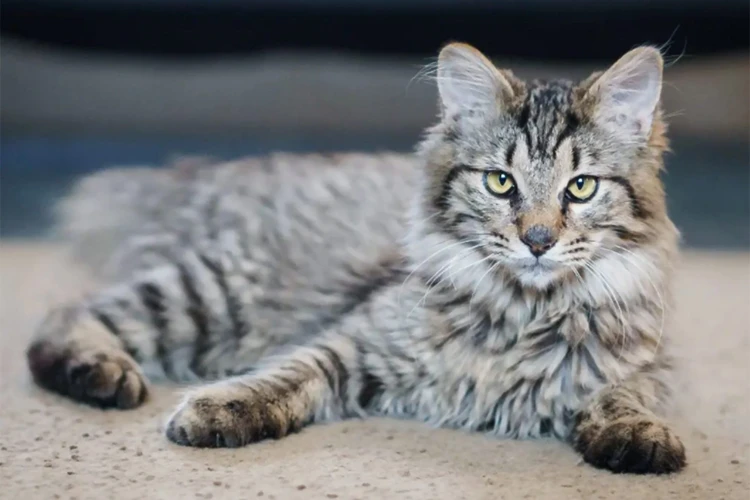
If you’re looking for a breed that stands out from the crowd, look no further than the American Bobtail. With their unique appearance and charming personality, these cats are a favorite among feline enthusiasts. From their distinctive physical features to their temperament and behavior, the American Bobtail is a breed that has a lot to offer. In this section, we’ll take a closer look at what makes the American Bobtail so special. Get ready to discover some truly unique features and characteristics!
Physical Characteristics
The American Bobtail breed is instantly recognizable due to its unique physical characteristics. Below are some of the key features that set them apart from other cat breeds:
- Tail: The most prominent physical characteristic of American Bobtails is their short, stubby tails. While most cat breeds have tails that are long and slender, the American Bobtail’s tail is 1/3 to 1/2 the length of a normal cat’s tail. Their tails also have a distinctive curve or kink at the end, though this varies from cat to cat.
- Body: American Bobtails are medium to large cats with a sturdy, muscular build. They have broad chests, powerful legs, and a broad, rounded head. Their eyes are large and expressive, and come in a range of colors, including green, blue, and gold.
- Coat: The American Bobtail’s coat is thick and shaggy, with a woolly texture. It comes in a wide range of colors and patterns, including solid colors, tabby, and spotted. While their coats may look wild and unkempt, they are actually very easy to maintain and require only occasional grooming.
- Paws: American Bobtails are known for their large, round paws, which are covered in thick fur. Their toes are also longer than those of other cats, which gives them a distinctive look and makes them excellent climbers.
The American Bobtail has a rugged, wild appearance that makes them stand out from other cat breeds. While they may look like they belong in the wilderness, they are actually loving and playful pets that make great additions to any family.
Temperament and Personality Traits
The American Bobtail breed is known for its unique features and not just in terms of physical appearance, but also in their temperament and personality traits. Here are some of the distinctive characteristics that define American Bobtail’s personality traits:
1. Playful: American Bobtail is known for being extremely playful and they love to play fetch games with their owners. They have a playful and jovial personality that can keep their owners entertained for hours.
2. Social: These cats are social creatures and enjoy human companionship. They get along well with children and other pets, making them perfect family pets.
3. Affectionate: American Bobtails are very affectionate towards their owners and love to cuddle and snuggle with them. They are known for their willingness to show their affection by following their owners around and sitting close to them.
4. Intelligent: American Bobtail cats are intelligent and can adapt to new situations easily. They have a quick thinking ability that allows them to learn new tricks and respond to their owner’s commands quickly.
5. Loyal: These cats have a loyal personality that makes them great companions. They are known to form strong bonds with their owners and enjoy spending time with them.
6. Curious: American Bobtail cats are curious and adventurous which makes them great explorers. They always seem to be interested in their surroundings and often become attracted to new objects or toys.
7. Independent: Although American Bobtails are social cats, they have an independent streak that allows them to be self-sufficient. They don’t require constant attention from their owners and can entertain themselves for hours.
These unique personality traits make the American Bobtail breed a great addition to any family. Their playful, social, and affectionate nature combined with their intelligence and loyalty, make them perfect pets for both experienced and first-time cat owners.
The American Bobtail in Popular Culture
When it comes to popular culture, cats have always been a beloved and fascinating subject. From the ancient Egyptians’ reverence for felines to modern-day internet memes, cats have a way of capturing our hearts and imaginations. The American Bobtail, with its distinctive appearance and charming personality, is no exception. Let’s explore the fascinating history of the American Bobtail in popular culture and see how this unique breed has left its mark on the entertainment industry.
Cats in Film and Television
The American Bobtail breed has garnered attention not only from cat enthusiasts but also from the entertainment industry. American Bobtails have been featured in numerous films and television shows, showcasing their beauty, intelligence, and playful nature.
In Film:
American Bobtails have made several appearances in popular films starting with the 2001 movie “The Kid.” In this film, the character Russ Duritz, played by Bruce Willis, owns an American Bobtail named Rusty. Rusty is a significant part of the movie, serving as an essential companion to Russ’s character.
American Bobtails were next seen in the 2007 movie “Fracture.” In the film, the character Willy Beachum played by Ryan Gosling, owns an American Bobtail named Lestrade, which serves as a metaphor for Willy’s desire for independence.
Finally, in the more recent 2019 movie “Captain Marvel,” the character Nick Fury adopted an American Bobtail named Goose. Goose, played by four different cats, became an instant hit, garnering a significant following from the audience.
In Television:
American Bobtails have also made several appearances in various television series. In the hit television series “Breaking Bad,” the character Jesse Pinkman kept an American Bobtail named Badger, which served as a plot device, connecting Jesse with his childhood.
Another television series that featured American Bobtails is “Elementary.” In the show, the character Sherlock Holmes owned an American Bobtail named “Maiden.” Maiden served as a loyal companion to Sherlock throughout the series and even helped him solve some cases.
Here’s a table showing the American Bobtail appearances in films and television:
| Film/Television Show | Year | Character Name | Actor/Actress |
|---|---|---|---|
| The Kid | 2001 | Rusty | Bruce Willis |
| Fracture | 2007 | Lestrade | Ryan Gosling |
| Captain Marvel | 2019 | Goose | Four Different Cats |
| Breaking Bad | 2008-2013 | Badger | American Bobtail |
| Elementary | 2012-2019 | Maiden | American Bobtail |
American Bobtails have made a significant impact in the entertainment industry, showcasing their beauty, intelligence, and playful nature. The breed’s distinctive physical characteristics and unique temperament make them a favorite among cat enthusiasts and filmmakers alike.
The American Bobtail in Literature
The American Bobtail, with its unique characteristics, has made its way into the realm of literature. Various authors have written about this breed, both in fictional and non-fictional works.
One such book is The American Bobtail Cat: An Owner’s Guide to a Happy Healthy Pet by Audrey Pavia. The book gives a detailed account of the history and evolution of this fascinating breed. It discusses the Bobtail’s unique features, personality traits, and care requirements. The book is a must-read for anyone considering adopting an American Bobtail or for those who already own one.
Another work is the children’s book Curious Cats: American Bobtail by Sarah Hines Stephens. The book follows the adventures of an American Bobtail kitten named Simba. It tells the story of Simba’s journey through the day, meeting other animals and exploring the world around him. The book is an excellent introduction to the breed for young readers and helps them understand the traits that make American Bobtails special.
In the works of fiction, the American Bobtail has also made appearances. In the book The Cat Who Blew the Whistle by Lillian Jackson Braun, the Bobtail makes a cameo appearance when the protagonist, James Qwilleran, adopts one from the local animal shelter. The Bobtail, named Koko, plays a significant role in solving the mystery in the book. Koko’s exceptional intelligence, typical of the American Bobtail breed, is showcased throughout the book.
In conclusion, the American Bobtail has found its way into literature, both in fictional and non-fictional works, playing significant roles in some instances. They are unique breeds and have caught the attention of many. From children’s books to crime novels, the Bobtail has left its mark on literature.
Conclusion
In conclusion, the American Bobtail is a fascinating breed with a rich and varied history. From its wildcat ancestors to the modern, recognized breed we know today, the American Bobtail has had a journey full of twists and turns. Its distinctive physical characteristics, such as its shortened tail and muscular build, make it easily recognizable, but it’s the breed’s friendly and outgoing personality that truly sets it apart. The American Bobtail is a loyal and affectionate companion, making it a popular choice for families and individuals alike.
While the American Bobtail has made a mark in popular culture through its appearances in film and literature, its real impact is in its role as an ideal family pet. Those who have lived with or been around the breed often point out how their playful and affectionate nature makes them perfect for households with children or other pets.
Whether you’re a seasoned cat owner or considering getting a feline friend for the first time, the American Bobtail is definitely a breed to keep in mind. Its storied past, unique features, and lovable personality make it a standout among cat breeds. So if you’re looking for a loyal and loving companion, look no further than the American Bobtail.
Frequently Asked Questions
What is the size of an American Bobtail?
On average, American Bobtails weigh between 7-16 pounds, and stand about 8-14 inches tall.
What is the lifespan of an American Bobtail?
American Bobtails have a lifespan of around 13-15 years.
Are American Bobtails good with children?
Yes, American Bobtails are known for their affectionate and playful nature, making them great with children.
Do American Bobtails shed a lot?
American Bobtails do shed, but not excessively. Their fur is short and dense and requires minimal grooming.
Are American Bobtails prone to any health problems?
Generally, American Bobtails are considered a healthy breed. However, they can be prone to hip dysplasia and urinary tract issues. Regular vet check-ups are important.
Do American Bobtails have any unique behaviors?
Yes, American Bobtails tend to be highly intelligent and have a knack for problem-solving. They are also known for their dog-like behaviors, such as playing fetch and bonding closely with their owners.
What are the common coat colors of an American Bobtail?
American Bobtails come in a variety of colors, including brown tabby, silver tabby, black, and white.
How much exercise do American Bobtails need?
American Bobtails are active cats and require moderate exercise, such as interactive play and scratching posts.
Are American Bobtails recognized by all cat registries?
No, American Bobtails are not recognized by all cat registries. However, they are recognized by The International Cat Association and the American Cat Fanciers Association.
What kind of home is best for an American Bobtail?
It’s best for an American Bobtail to have a spacious home with opportunities for indoor and outdoor play. They also thrive in homes with owners who can provide affection and attention.

